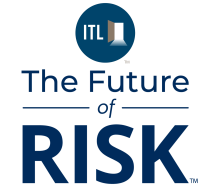A boss of mine once observed that he'd benefited repeatedly through his life and career because he was born just a few years before the Baby Boom began in the U.S. after World War II. He applied for college when there was little competition and went to Penn, then had no trouble finding a good job. He bought a house and moved to a lush suburb before the horde of Boomers had the inclination or the money. He developed enough management experience that, when the Boomers did flood into the work force, he moved into supervisory roles that eventually took him to the top of a large consulting firm.
His experience came to mind as I read through Capgemini’s World P&C Insurance Report 2025, which makes a compelling case about how global demographic shifts are going to require major changes in insurance over the next 25 years and beyond. The report states:
"These shifts are... a call to redesign how risk is assessed, products are structured, and portfolios are shaped."
The winners will be those insurers that, like my old boss, are a few years ahead of the pack. After my cross-country move last week, I'm still digging through boxes trying to find silverware, bath towels and other items I've long taken for granted, so I'll be brief, but here is what stands out for me in the coming tidal wave of demographic shifts:
The summary for Capgemini’s report says:
- "Aging and urbanization are concentrating risk, requiring new underwriting and pricing models
- Ownership is evolving, pushing insurers toward flexible, modular coverage.
- Customers want proactive protection, not just payouts — ecosystem partnerships are key."
To me, the key predictions for aging and urbanization that have to be accounted for are:
- "By 2050, for every 100 working-age people, there will be 26 seniors to support, up from 16 today — a 63% increase. And in most regions outside of Africa, the imbalance intensifies, approaching nearly one dependent for every three workers."
- "Nearly 70% of the global population will live in cities by 2050, concentrating people, and the risks they carry, into denser, more complex environments.
For the shifting definition of property and value, the key point is:
"People are delaying — or forgoing — buying homes, and when they do, they often choose smaller, more urban spaces.... 45% of consumers plan to increase spending on experiences like travel and leisure rather than accumulating goods or property.... 70% say they don’t plan to change their housing situation, reinforcing the trend toward more flexible, less asset-heavy lifestyles.
In terms of the desire for protection, the key points are the need for:
- Enhanced safety and security – Aging individuals, particularly those living alone, need real-time protection....
- Reduced complexity – Older consumers often prefer simple, predictable coverage that reduces cognitive burden.
- Service-integrated protection – Insurance can’t just reimburse; it must assist. As insurers integrate with service providers, policies can evolve into holistic solutions: home maintenance, health checks, ergonomic evaluations and more....
- Support for businesses with aging workforces – Aging workforces bring new risks — from increased injury potential to challenges in knowledge retention.
Capgemini recommends four best practices:
- Recalibrate geographic focus: That means moving beyond mature markets like North America and into growth markets, such as India, whose economy is expected to be $30 trillion by 2050. It means more focus on urban areas and on climate-related problems.
- Create age and lifestyle-friendly service models: This involves moving to a Predict & Prevent model from the traditional repair-and-replace approach, as well as supporting aging in place.
- Build strategic ecosystem partnerships: As technology bring us autonomous vehicles, smart homes and more, insurers will need to work together with technology companies and governments.
- Transform talent strategies: As the population ages, insurers will need to accelerate the transfer of knowledge from retirees to younger employees, retain older workers and attract talent from nontraditional pools.
I realize that predictions based on demographics can be tricky. When I decided to write about the Capgemini report, I considered using as the headline: "Demographics Are Destiny." I quickly realized the phrase was floating around in my head because the Democratic party had rallied around the idea a decade or so ago, comforting itself that an influx of young voters and new citizens into the electorate would move the country away from the Republican party. Oops.
But it's still clear that those who get the demographic shifts right will win.
Mitch Kapor, the founder of Lotus, once told me that he got his big break in computing because he was literally a day ahead of the curve. As a recent graduate of Yale in the early 1970s, he had kicked around in a variety of jobs. A computer enthusiast, he bought an Apple II right after it came out in 1977. A day later, he returned to the store. As he stood in line, the person ahead of him bought an Apple II and asked the clerk whether he knew of any consultant who could help him figure out how to use it.
"I'm a consultant," Mitch said, after one day with his machine.
That one gig led to others, which led him to Electronic Arts, the maker of the first electronic spreadsheet, which led him to the idea that became Lotus. And the rest is history. All because he was one day ahead of what became the computer revolution.
Cheers,
Paul
P.S. My horrors with Xfinity continue. I wrote last week about my nightmare experience with the company as I canceled service in advance of my move East and assumed that would be the end of that. I was even impressed when I turned in my cable box and wireless router. The customer service rep told me I could just set them on a table, and he'd scan them into the system. No need to fill out any form. Well, today, nine days later, I got both a dunning phone call and an email from Xfinity demanding that I turn in my cable box and router.
When I called Xfinity, a rep told me, "Oh, don't worry about those. It takes two weeks for our systems to update. You only need to worry about something like a notice that your account is being sent to collections if we send you one after the 24th."
Two weeks to update based on a scan? At a major corporation? That spends money on its IT systems?


